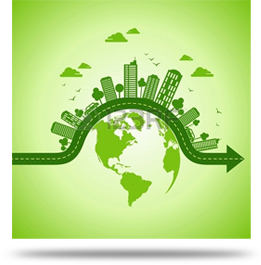A.) Biometrics identifies people by a unique human characteristic. The size and shape of a hand, a fingerprint, the voice and several aspects of the eye are just some unique attributes. "The word 'biometric' simply means the measurement of a living trait, whether physiological or behavioral. Biometric technologies compare a person's unique characteristics against a previously enrolled image for the purpose of recognizing."
A.) HandPunch uses a field-proven technology called hand geometry, which verifies an individual's identity based on the size and shape of the hand. It does not take fingerprints or handprints.
A.) Hand Geometry has been in use longer than any other biometric. Two-dimensional hand geometry devices have been around since the 1970's. Schlage has sold over 150,000 HandPunch HandReaders since 1986.
A.) The HandPunch measures the unique size and shape of the fingers and hand. Over 90 different measurements are made such as, length, width, thickness and surface area. No finger prints or palm prints are taken.
To enroll an employee for the first time, the employee would put their hand into the HandPunch three times so that a CCD camera records 3 images of the hand. An algorithm converts these images into one mathematical value (Your template). This template is then stored in the HandPunch. Each time an employee puts their hand in the HandPunch to punch in or out of work, the HandPunch takes another image of the hand, the algorithm converts this image to a mathematical value and then compares this new template with the template the HandPunch has stored previously. If the two templates match, identity is confirmed and the punch is recorded.
Each time an employee punches in or out, their template is updated with each successful verification. Basically the machine “learns your hand”. This allows for changes due to weight gain or loss, aging, etc. This also eliminates the need to re-enroll users.
To enroll an employee for the first time, the employee would put their hand into the HandPunch three times so that a CCD camera records 3 images of the hand. An algorithm converts these images into one mathematical value (Your template). This template is then stored in the HandPunch. Each time an employee puts their hand in the HandPunch to punch in or out of work, the HandPunch takes another image of the hand, the algorithm converts this image to a mathematical value and then compares this new template with the template the HandPunch has stored previously. If the two templates match, identity is confirmed and the punch is recorded.
Each time an employee punches in or out, their template is updated with each successful verification. Basically the machine “learns your hand”. This allows for changes due to weight gain or loss, aging, etc. This also eliminates the need to re-enroll users.
A.) Buddy punching is when one employee clocks in for another employee. This usually happens when one employee is running late. That employee will then call into work to ask a coworker/friend to clock them in at their scheduled time to report to work. This is the basis for payroll fraud that costs companies thousands of lost dollars per year.
A.) Badge-based terminals eliminate many of the problems associated with manual time and attendance systems. But there’s one issue that remains: “Buddy Punching,” the practice of employees clocking in other employees who are not at work. HandPunch HandReaders stop buddy punching because, unlike badges and cards, the hand can’t be lost, stolen, or loaned to another person.
A.) Up to 32,512. HandPunches hold from 100 employees up to 32,512.
A.) Not usually enough to reject a valid user. Just make sure the ring is in the upright position and hand placement is proper and there should not be any issues.
A.) You can be enrolled with your left hand; palm up while the right hand is disabled. It’s not as comfortable but will work fine.
A.) Compare hand placement on the platen to using a door knob/handle, money handling, telephone use, or shaking hands. As of June 2007, every handreader platen (Where user places their hand) contains an anti-microbial agent. These active agents are incorporated during the manufacturing process and because they cannot leach out or wash off the surface, remain active for the life of the biometric reader. This material does not change the look or the feel of the product but it continually protects the platen’s surface against microbes, making it cleaner and more hygienic.
A.) Hand geometry technology has never been reverse-engineered to identify people. Hand geometry units do not store the image of the hand, but instead store a 9-byte template which is a mathematical representation of the hand image. This mathematical value is meaningless to other devices. In addition, no fingerprint or palm print information is gathered.
A.) The infrared lights used in the hand reader are similar to those used in remote controls for TV’s and VCR’s. The light’s power level is less than the amount produced by natural sunlight. Schlage has submitted handreader information to the U.S. Occupational Safety and Health Administration (OSHA). OSHA did not report any hazards.
A.) Schlage was founded in 1920 and is currently a subsidiary of Allegion, an Ingersoll Rand spin-off formed in December of 2013. Schlage is a well known, iconic brand.
A.) We are a Value Added Reseller of HandPunch biometric timeclocks. They are the only timeclock that we sell, because they are quite simply the best on the market. Will Horan, president of the company, has personally installed hundreds of handreaders over the last decade for companies both large and small.

